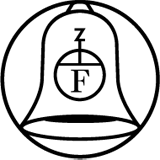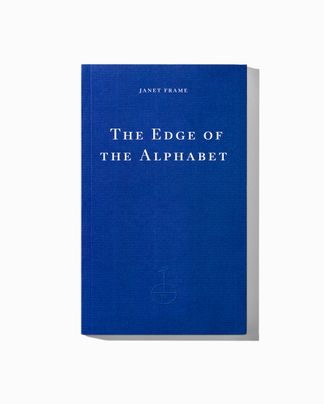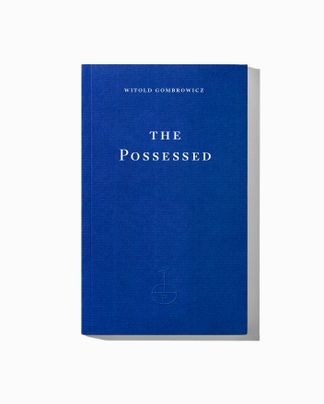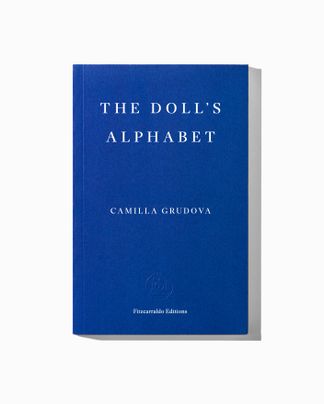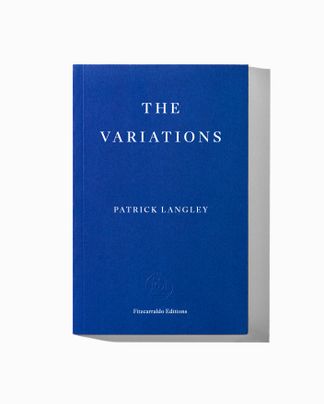In A State of Siege, Janet Frame brings her signature playfulness to paint a thrilling psychological portrait. After the death of her invalid mother, Malfred Signal, a retired New Zealand art teacher, leaves her birthplace in the south for a beach cottage on a sub-tropical island in the north. Freed from endless lessons on still life and the dominating presence of her family, she hopes at last to be alone with nature and the ‘room two inches behind the eyes’. But the solitude she has sought mocks her with echoes of her past, when, one stormy night, an intruder pounds ceaselessly and inexplicably on her door. Propulsive yet poignant, A State of Siege is a mesmerizing exploration of the artistic process, of selfhood and loneliness, and of death and its counterpart: the need to survive, to live.
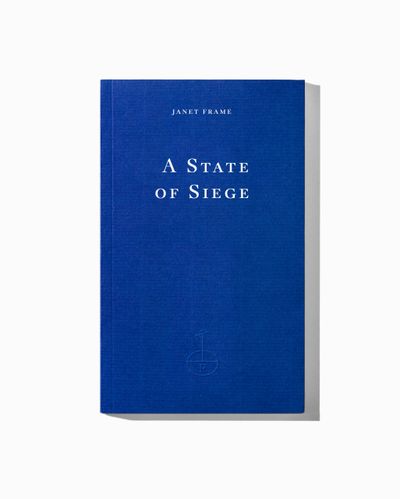
A State of Siege
Introduction by Chris Kraus
Fitzcarraldo Classic No. 10 | French paperback with flaps, 256 pages
Published 6 November 2025
A State of Siege
Introduction by Chris Kraus
I .
THE KNOCKING
i.
A South Pacific paradise. An island where storms were stormier, rain was rainier, sun was sunnier; where figs, bananas, passionfruit, pawpaws, feijoas, custard apples, guavas, grew and ripened; where the cold pale narcissi opened their buds at the official beginning of winter, and violets bloomed all year; where the only enemies of man, apart from man, were wasps as big as flying tigers, a few mosquitoes breeding a giant island strain, too many colonies of ants; and perhaps, though one does not explain why, the sullen grey mangroves standing in their beds of mud in the tidal inlets facing the mainland.
People from all over the country retired to Karemoana. Others owned or rented baches there, crowding in summer onto the old ferry boats with their holiday gear — including children, goggles, frogmen flippers, fishing rods and reels, bathing suits, grey bach blankets, tinned food, sun umbrellas. The island became a world of guitars, beer, love (free and imprisoned), rejoicing, loneliness, louts and sun. The shopkeepers in the small towns and along the unmade roads forgot their fears of bankruptcy and put out hopefully on the counters, already laden with old stock, a few more weevil-infested packets of walnuts and peanuts, and sea-rusted tins of tomato soup. Then, after summer, when the tourists and holidaymakers had gone, the three hundred permanent residents would reclaim their almost-deserted island, and with the space, sun, rain, silence to grow and ripen as freely as the fruit and vegetables around them, they would nurse their individuality, encouraging the growth of the kind of eccentricity that flourishes best on small islands kept fluid in image by the everpresent sight and sound of the sea.
In relation to the rest of the country, Karemoana and the mainland lying in its latitude were ‘up north’ in a foreign climate with foreign inhabitants whose speech and way of life were American, Australian, Polynesian, certainly far from New Zealand. ‘Up north’ was a place blessed with sunlight, warm winds, subtropical ease; its people were prosperous, confident, free; they thought themselves superior, and perhaps they were, cherishing their geographical ‘king of the castle’ delusion while the oppressed south, the true ‘down under’, struggled for political air and attention. The north lured. The population of the south drifted north as to a new frontier, leaving saddened Borough and City Councils, Tourist Boards, and, in some places, ghost towns. There seemed to be no way of bringing home the deserters, nor of encouraging the new settlers to stay after they had been seduced by the tales of returning holidaymakers and by the ecstatic cries of their frost, snow, mist-ridden neighbours:
‘It’s subtropical! The north is subtropical! They grow oranges.’
Members of Parliament preferred not to speak of this climatic rift because it was something they could neither control nor promise to change. Everyone knew that orange trees grew up north. The southern retaliation that up north the climate was too dry for the best peaches and apricots that furred the trees and the purses of Central Otago, seemed never quite to have the conviction of northern boasts. Orange trees; orange blossoms; the fruit hanging golden, ripening in winter; the soft dark figs bursting at the close of a hot summer; tree tomatoes; Chinese gooseberries. And sun. Months of sun.
And all these blessings without the mainland curse of too many people, their motorcars, motor mowers and transistors, were enjoyed on the islands in the gulf – on Huia, Little Colville, Coromandel, and on Karemoana where Malfred Signal of Matuatangi, South Island, came to retire, not too old at fifty-three to enjoy the comforts of the longed-for separate life in an environment that gave the novel illusion of a world abroad, overseas, in a golden vale of orange trees: a South Pacific paradise.
ii.
Malfred buried her mother (recently dead, worn out in soul and skin and with the same spotted brown patches on both) and saw her father, thirty years dead, set up in bronze on a lonely headland overlooking Matuatangi, before she made the move north. Her going was a pilgrimage against her nature and her family, especially against her family. The fact that it was a pilgrimage gave her the strength to carry out her plans: at fifty-three, or indeed at any age, there are so few opportunities to be a pilgrim.
‘But Malfred,’ everyone said, ‘your father almost built Matuatangi with his own hands, time, patience and money. And you are your father’s daughter.’
People had a habit of casting this unanimous verdict without being aware of the sentence it imposed. Malfred, with her sister Lucy (married to a local businessman who one day, in his turn, would have his statue set on a lonely headland, if there were any headlands left that were lonely), and her brother Graham (member of a law firm in Christchurch), each had a strong sense of family responsibility. It had seemed that a sense of loyalty alone would persuade at least one member of the family to stay in Matuatangi. Lucy had settled there, happily. But everyone knew, and remarked, that it was Malfred who was her father’s daughter; and here was Malfred, born and bred in the town (what blackmail, what self-satisfaction in those words born and bred), leaving Matuatangi to live in the foreign North Island! Malfred, who had taught art for so many years at the local High School, who had retired early to care for her sick mother, who yet had found time to help in Corso appeals, to organize WEA lectures in the library hall, to paint and exhibit in the Art Society’s rooms, those well-loved, local landscapes and seascapes that were prized for their water-colour likeness to the original scenes. Why was Malfred Signal deserting Matuatangi? Who did she think she was – Grandma Moses?
There was a farewell evening organized by the Old Girls’ Association with a present bought from contributions made by the Old Girls, the Art Society, the WEA; and Malfred prepared to go north with the good, though wondering, wishes of the people of Matuatangi cast for her in the shape of a pair of silver candlesticks, and with her family’s good wishes not as solidly expressed in the shape of good advice, instructions to write, reminders of her age, and of the fact that she was her father’s daughter.
‘In Matuatangi,’ Malfred told them, ‘I can scarcely forget it.’
Drinking fountains, seats, gates, foundation stones, trees, all had been named after Francis Henry Signal. He was on the Mayoral Roll in the Town Hall, in the records of past Library Committees (Athenaeum and Mechanics Institute) and the Boys’ High Honours Board. He had been a legend that Malfred had found hard to reconcile with the slight, shy, brown-eyed man that she knew. He’d climbed mountains, too, named peaks in the Southern Alps, had been mentioned in the country’s history; yet Malfred remembered most clearly his gentleness, his long silences, his body that did not seem to have the right shape, for he walked as if one of his legs were shorter than the other, and his head dropped to one side. Malfred had been amused at the Apollo-like image cast of him in the bronze statue: his chin was firm, his head erect, his stance determined, almost regal. The sculptor had shaped him as the conventional Hero, and had got away with it, Malfred supposed, because her father, in life and in death, had been treated as time treats so many heroes: his exploits had been given physical expression.
Malfred knew that the family and the townspeople (who are always more shrewd than is to be admitted) were correct in naming her her father’s daughter. She was her father’s only child. Where Graham climbed mountains, Lucy knew the names of the native trees, but neither had made mountains or trees as separate dreams inside their mind, as Malfred had done. Malfred knew of the ‘room two inches behind the eyes’; it was filled almost to over-flowing; yet for forty years she had kept it locked. She had not planned that her exploration of it would be a dramatic occasion for herself or others. She kept remembering that when she was a child she had kept a fierce-looking beetle in a matchbox, not daring to look at it, and then when one day she found the courage to open the box, she found only a shrivelled, dry shell. But the shell had once been such a beautiful amber colour that having the beetle dead and gone did not seem important, for it had left behind the memory of its colour, of the shell that shone — yellow streaks on dark polished gold and amber. It had seemed incredible to Malfred that the thing, for so long unlooked at, had once been a creature, a pet with a name of its own. Howard. Yes, that was his name: Howard.
Malfred knew that she was on no human terms with the ‘room two inches behind the eyes’, that what lay there, treasure or no treasure, did not belong to her, had not been captured by her and given a name. Perhaps it would never be captured and named. Yet she felt that for the first time in her life she was free to explore that room, and the fact that she was seizing the opportunity to explore branded her more surely than any other action had done as her father’s daughter. What her father wanted to do, he had done, in time; he had been patient, persevering; his ‘one day when I get the chance’ had remained a genuine excuse, not the way of life it becomes for so many people, through their own deficiencies or through the sly workings of fate.
Malfred had been interested most of her life in painting. She was not sure that on Karemoana she would be inspired to paint; she wanted, first of all, to observe, to clean a dusty way of looking. From her collection of water colours she chose to take north with her, first, a painting of the mouth of the Waitaki in early winter; next, an old
mill scene depicting the old mill at Matuatangi; then, a painting of the lonely headland where her father’s statue had been set up. Other paintings she chose were a country scene on a day of a nor’wester, the old Main Street of Matuatangi with its wool and hide stores, early newspaper offices, rabbit-skin factory, new foundry. It was when she was trying to limit her choice of paintings that she realized (though she had known it for years, passively) how sentimental, colourless, were the images she had made of the scenes that were dearest to her; the true images were in her mind; she could stare at the mouth of the Waitaki in early winter without having to burden herself with a pile of dusty canvases that would remind her less of the scenes depicted than of the years spent ‘teaching’ art, pouncing on the faulty ‘shadowers’, trying to instil the ‘sense of proportion’ that in her probationary years meant persuading schoolgirls to ‘match’ the sides of shovels and vases, to make distant mountains distant, near faces near; but which meant to her now an attempt to rearrange her own ‘view’, set against the measuring standards not of the eye but of the ‘room two inches behind the eyes’.
(…)
‘This begins where most novels fear to tread: in middle age. Malfred Signal is a retired art teacher who has spent the best part of her adult life caring for her invalid mother and who would now like to have her “view” of the world…. A storm descends, and soon Malfred is terrorized by someone knocking ceaselessly on her door, leading her to search her past and ask the ultimate question of our age: what good is a room of one’s own if it’s in hell?’
— John Vaughan, Irish Times
’[U]tterly distinctive. Of course, Frame recalls Woolf; like all of us, she writes in her wake. And of course, like Mansfield, who achieved canonization by living as the colonial transplant that Frame decided not to be, she expands our view of anglophone modernism to the corners of the map. But as Malfred realizes while under siege, acknowledging your mother is only part of the duty of a twentieth century daughter. Making sense of yourself without her is just as crucial.’
— Eleanor Clark, Oxford Review of Books
‘Intensely personal, her writing is always spiralling in on itself, towards the condition of myth, and yet it nails the moment, pins down experiences so fleeting that others would never grasp them. What eludes ordinary language, she can capture in the extraordinary argot of her imagination.’
— Hilary Mantel
‘She is a singular writer. No one is quite like her.’
— Eleanor Catton, author of Birnam Wood
‘Janet Frame is a revelation, a genius, who also feels like a long lost friend, an intimate hero. A State of Siege hits you like lightning, it is a painterly masterpiece which makes you see the world anew. Nowhere else have I read such a vivid description of a woman alone in our strange and unforgiving universe. Everyone must read her.’
— Camilla Grudova, author of Children of Paradise
‘Frame achieved that supremely difficult task of finding a voice so natural it feels almost as if it were not written.’
— Jane Campion, Guardian
Praise for The Edge of the Alphabet
‘Her writing is engaging and idiosyncratic – full of a character that proves that the best way to strike deep with the reader is not to do what everyone else is doing, but to grasp your distinctive vision of the world and hammer it hard.’
— John Self, The Times
‘Janet Frame’s prose is a highly volatile material. Words, sentences, paragraphs behave like mercury on the page, running this way and that, forming new shapes and smears from one silvery, trembling blob…. Frame’s fiction … made not of some stale conception of verisimilitude but of the shifting stuff of sentences, can take us to a borderless, boundless anywhere.’
— Kirsty Gunn, Times Literary Supplement
‘The most Woolfian of Frame’s work: with intense, often dissociated separate monologues and repeated imagery of light, sounds and shapes evoking The Waves, and the long, turbulent journey by sea of Woolf’s first novel, The Voyage Out.’
— Catherine Taylor, Guardian
‘A revelatory portrait of the sometimes unbearable unease of being a human, wrapped up in a consummately playful metafiction.’
— Ellen Peirson-Hagger, New Statesman
‘Frame’s writing … frequently returns to the strange, self-doubling rituals of normalcy, required of us to find so-called connection…. Her sentences, always at the shore of some great nothingness, have the intricacies and echoes of a conch shell…. Frame points us away from the sturdy book in our hands, toward the flimsy, the abandoned, the scrapped and scraped, the reflective, the ribboned. Toward stories that are nothing but a title, and masterpieces that can fit in the interior pocket of a handbag. There, she says, look. You almost missed it. Look what she has made.’
— Audrey Wollen, New Yorker
‘Frame’s writing is often compared to Faulkner’s, and her family history reads like a Southern Gothic novel. Yet Frame can be an extraordinarily cheerful, funny writer. Language was a source of continual revelation… The Edge of the Alphabet is about trash, debris, dreams, the incommunicable and the excluded.… The proposition Frame seems to be making is that marginality means semantic exile too; vivid, broken images are her characters’ alternative vehicles for communication.’
— Lucie Elven, London Review of Books
Janet Frame (1924–2004) was a celebrated New Zealand author of novels, short stories, poetry and the three-volume autobiography An Angel at My Table that was adapted for cinema by Jane Campion. Janet Frame won numerous local and international literary prizes including the Commonwealth Prize for Best Book. She was an Honorary Fellow of the American Academy of Arts and Letters and held two honorary doctorates. She was awarded a CBE in 1983 and in 1990 she was made a Member of the Order of New Zealand, the country’s highest civil honour. Her work is in print around the world and has been translated into many languages.
Chris Kraus is the author of five novels, most recently The Four Spent the Day Together, and a co-editor of the independent press Semiotext(e). She partly grew up in New Zealand, reading Janet Frame.
